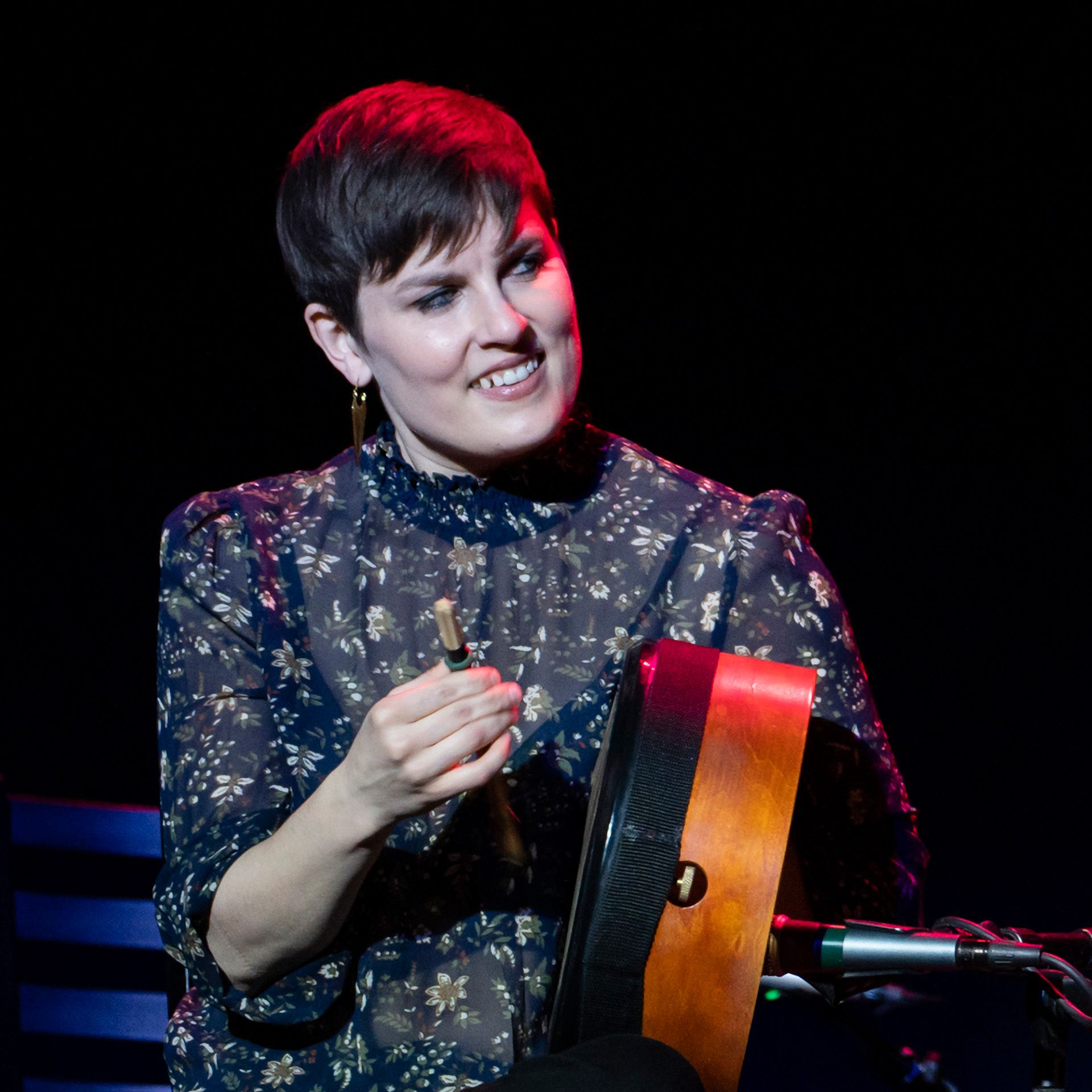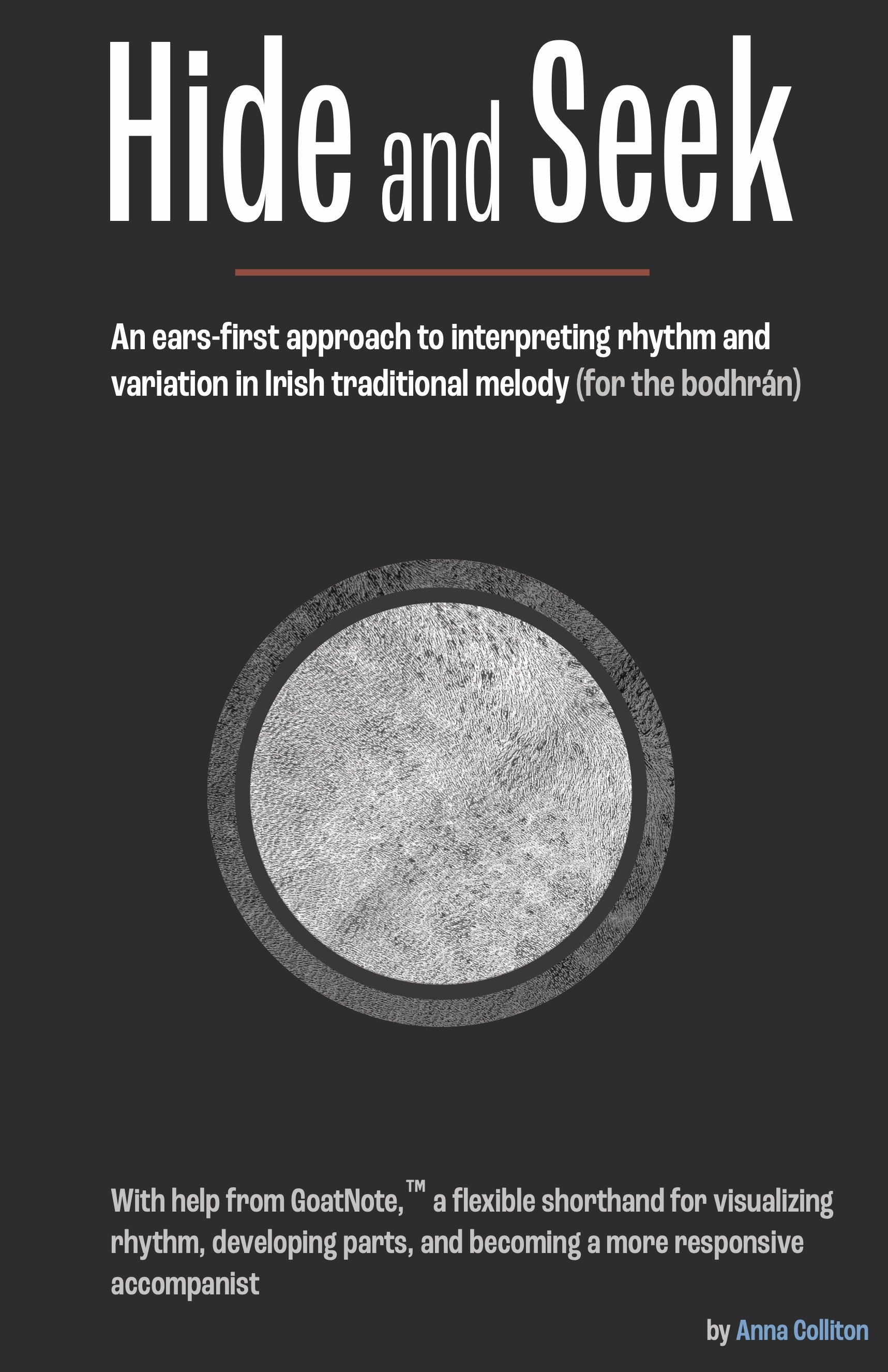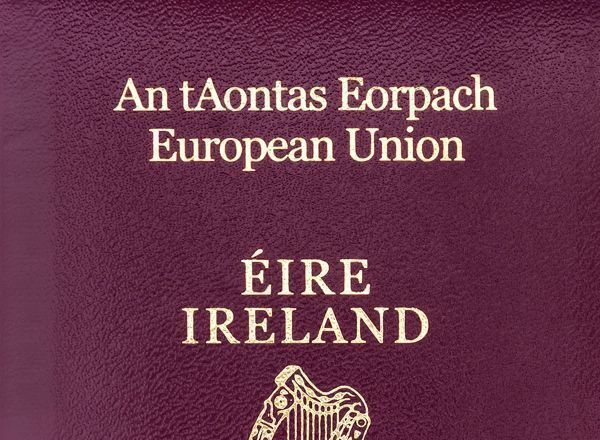Over the summer I ran into bodhrán player Anna Colliton, who in the course of a chat told me that she was putting together a bodhrán instruction book. It was an intriguing thing to hear, as Colliton is not just a fabulous player but she’s a real student of the bodhrán and has a great reputation for passing her passion for the instrument on to her students. The idea that she was working on a teaching tool – one, she explained, was geared toward “players with a working knowledge of the instrument” – was one I thought very interesting, indeed.
Flash forward a couple months. We run into each other again, but this time she put a copy of “Hide and Seek: An ears-first approach to interpreting rhythm and variation in Irish traditional melody for the bodhrán” into my hands. It looked brilliant: a handsome, slim, well-considered volume that one might consider buying based on the design alone. But as I looked it over I was delighted by the intuitive, practical approach to the instrument it contains. It’s a book that has great value and one I think readers of this column–especially those who play the bodhrán or who know someone who does (and who might need an inspired holiday gift)–should be aware of.
A couple things about Colliton up top: first, she’s an accomplished performer. She’s played alongside groups like Cherish the Ladies, Eileen Ivers, Comas and the Paul McKenna Band; she had a year’s-long residency playing Irish music at Walt Disney World; during the pandemic she was very active on the Tune Supply website; and she’s even played in the hit Broadway show “Come From Away.” And as I suggested earlier, she’s a clear-headed teacher who has led workshops (and continues to) at all the major teaching weeks in the United States.

The second thing to know is that Colliton is also a superb graphic designer (https://annacollitonvisuals.com). If you’re a reader this column you’ve seen her work over and over again — on the albums of Nathan Gourley & Laura Feddersen; Kevin Crawford, Colin Farrell, & Patrick Doocey; and Dylan Foley & Dan Gurney, to name a few. She has a strong sense of how design works and bringing this visual sense together with her user friendly approach to pedagogy is what “Hide and Seek” is really what this book is all about.
First thing’s first, this book is not really for rote beginners. I mean, it’s not not for them, but you won’t find anything here about how to beat your drum from scratch. Colliton wrote it specifically with people who already have some competency on the instrument in mind. This book is intended to assist the advancing player. She puts an emphasis on understanding melody, how a drummer should articulate with it and how to develop a sense of groove within it.
“Hide and Seek” contains three sections. The first is concerned with a notational system Colliton’s developed and calls “GoatNote.” Comprised of a small number of symbols, “GoatNote is a simple rhythmic shorthand for quickly transcribing and deconstructing bodhrán parts” and “is as much a way of practicing and thinking about rhythm as it is a system of notation.” She spends a good bit of time explaining how it works and evaluating its advantages and shortcomings, and in the end does a convincing job of establishing its practical utility.
Section two is devoted to the notion of “groove.” This is considered through several classic recordings, none of which contain bodhrán. The intention here is to get players thinking about things that happen in melodies, how the drum might fit with them, and how these events contribute to a sense of groove. To illustrate these ideas, Colliton includes references to well known recordings.
The third section is all about the question of personal style. Colliton’s approach is more granular here (for example, she writes of things like the “Kerry-style triplet”), but this granularity is really more about encouraging folks to better understand how to mobilize pre-existing tools into their own approach. The framework for this section is deftly expressed in the GoatNote notation (again, which is rather easy to interpret), and illustrated in practice using references to classic recordings.
Two side notes: the recordings Colliton referenced have been assembled into a YouTube playlist, so you don’t need to own them all to make sense of her direction (she does encourage you to download them because that’s a fair thing to do). Also, at the end of the book she thanks the musicians who acted as early readers and who helped her streamline her approach. It’s an impressive group and I think one of the reasons why this book is as well considered as it is.
“Hide and Seek” is a brilliantly designed and smartly presented pedagogical tool. I think this really is the book to have if you’re a bodhrán player interested in upping your game. Colliton has great good taste, a solid understanding of the common deficiencies of developing players, and gives strong general advice that is easy to interpret, presented in a way that is very easy to work with. Ultimately, this is a principled approach to practice, similar to how Strunk and White’s “Elements of Style” works for writers (if I can draw a literary parallel). Highly recommended, especially for those bodhrán players out there who want to feel more welcome at sessions. This is great work by Colliton. For more and to purchase, visit https://annacollitonmusic.com/.
I’ll conclude this week with a bit of fun: I bet most readers didn’t know that Grace Kelly – better known today as Princess Grace of Monaco – amassed a world class collection of Irish sheet music. She actually did and the collection is housed at the Princess Grace Irish Library in Monaco (https://www.pgil.mc/). Established in her memory in 1984 by her husband Prince Rainier, it includes the sheet music as well as over 9,000 books.
Earlier this year, I met Paula Farquharson, the library’s director, at the “Irish-American Music Cultures Symposium” hosted by Technological University Dublin’s Conservatoire and shortly afterward she asked if I’d be interested in being a guest on the Princess Grace Irish Library’s podcast. I was delighted by the idea and the episode was posted about three weeks ago. I talked about Mick Moloney’s influence on Irish music research, the challenges facing touring musicians from Ireland, pianist & composer Dan J. Sullivan, and my work writing for the Irish Echo. If you’re interested in having a listen, here it is:








